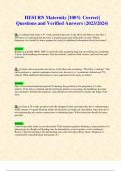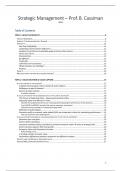Samenvatting
Summary CORPORATE SOCIAL RESPONSIBILITY (CSR) ALL LECTURER NOTES AND ASSIGNMENTS
- Instelling
- Tilburg University (UVT)
Summary of Corporate Social Responsibility Communication (CSR). All slides and articles clearly summarized with additional information from the lectures (such as EXAM QUESTIONS or THINGS THAT WON'T BE IN THE EXAM). In Addition, All assignments are added. So you don't have to prepare anything an...
[Meer zien]













